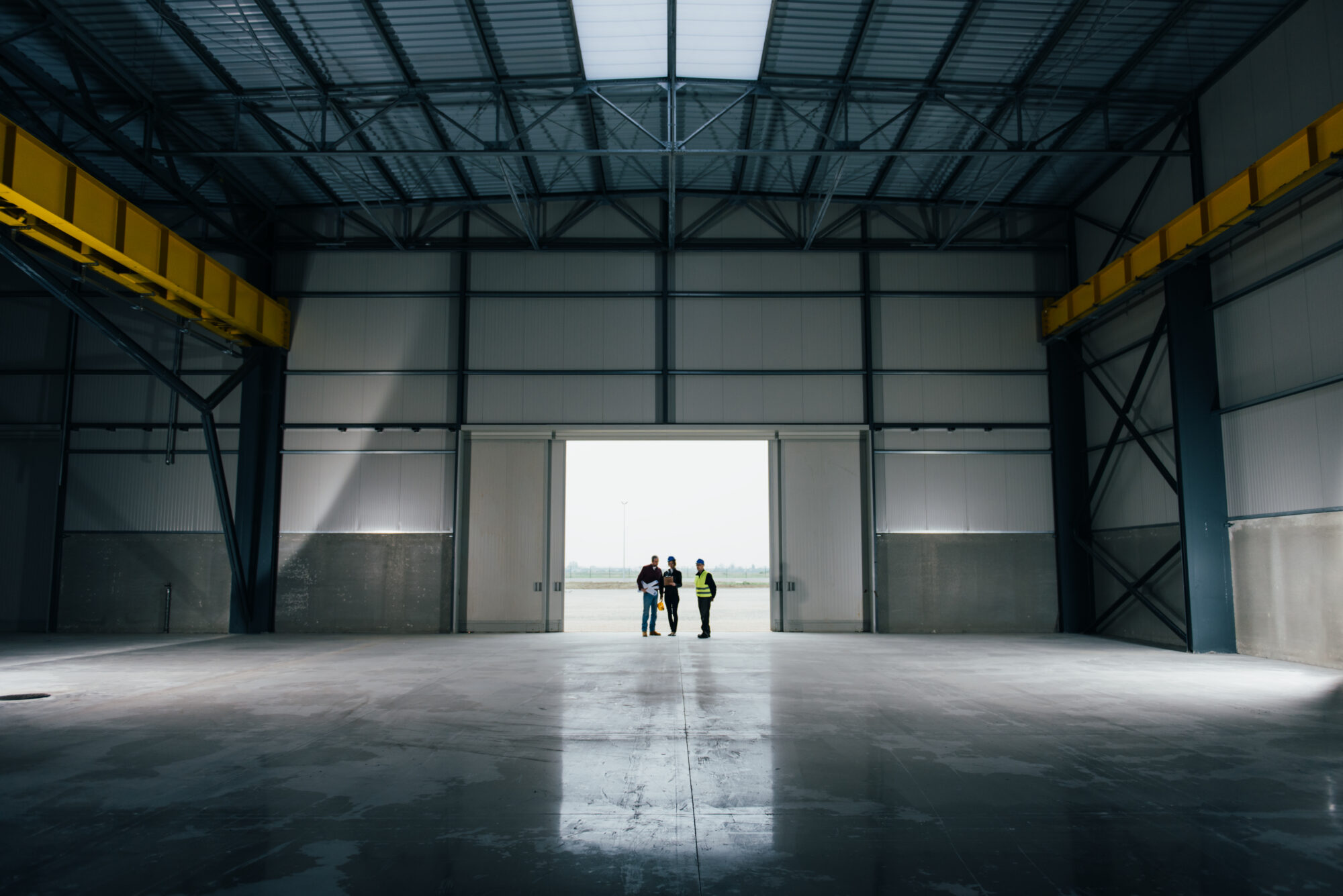For decades, warehouses have undergone technological transformations, each time increasing their efficiency, scalability, and adaptability. Now, standing at the forefront of this technological wave is Augmented Reality (AR). Offering a blend of real and virtual, AR is poised to redefine the paradigms of warehouse management.
The fusion of digital and physical elements, as enabled by AR, brings forth solutions that are not only innovative but also practical. This marriage of technology and functionality promises enhanced operational proficiency, ultimately driving warehouses to achieve their key performance indicators. But how exactly is AR proving to be a game-changer in the realm of warehouse management? Let’s delve deeper.
The rise of AR in warehousing
It wasn’t long ago when the concept of AR was confined to the pages of sci-fi novels or the screens of futuristic movies. However, the past decade has witnessed AR transition from fiction to reality, making significant inroads in multiple industry sectors, most notably in warehousing. As businesses grapple with increasing demands, shrinking delivery windows, and growing customer expectations, the need for agile and tech-driven solutions like AR becomes paramount. The keywords AR warehouse and technology warehouse are becoming ubiquitous, signaling a trend that is here to stay.
The beauty of AR lies in its versatility. Warehouses, with their dynamic environments, have benefited immensely from AR’s ability to adapt, guide, and optimize. From visualizing spatial configurations to real-time data interpretation, AR provides an interactive layer, enhancing the user’s comprehension and execution capabilities. Moreover, with the integration of AR in logistics and supply chain operations, there’s an evident shift towards more synchronized, transparent, and efficient processes, reinforcing the potential of augmented reality in logistics.
#1 Enhanced efficiency
The backbone of any successful warehouse operation lies in its efficiency. With margins being razor-thin, any technological advancement that promises better efficiency is worth its weight in gold. Enter AR. Augmented reality in warehouse operations is akin to having a virtual assistant guiding every move. This “assistant” can suggest optimized routes for pickers, highlight items on shelves, or even provide real-time updates on inventory levels.
To put things in perspective, consider a large warehouse catering to an e-commerce platform. During peak sale periods, the volume of orders can skyrocket. Traditional methods might falter under such pressure, leading to delays. However, with AR guiding the pickers using visual cues, the time taken to locate, pick, and pack items can be drastically reduced. This is not just theoretical; several enterprises have reported efficiency gains once they integrated AR into their warehouse operations.
#2 Increased accuracy in picking and packing
Accuracy is paramount in warehouse operations. An error in picking or packing can lead to returns, affecting the bottom line and the brand’s reputation. This is where AR comes into play, acting as an error-mitigating tool. With augmented reality in warehouse settings, workers can get visual confirmations for each item they pick, ensuring that the right product goes into the right box every single time.
Imagine a worker equipped with AR glasses. As they navigate the aisles, the glasses highlight the items to be picked, showing not just the location but also the quantity required. This virtual overlay minimizes the chances of human error, ensuring a more accurate fulfillment process. Several companies have reported a sharp decrease in picking errors after integrating AR solutions, further cementing its importance in modern warehousing.

presentation to try
Nsflow in action
#3 Streamlined training processes
Training new employees, especially in intricate warehouse operations, can be time-consuming and resource-intensive. Augmented reality offers a solution that’s not just efficient but also more effective. Using AR, new employees can be virtually guided through their tasks, allowing them to learn on the job without the constant need for a supervisor.
Think of AR as an interactive training module. A new employee dons AR glasses and is instantly provided with information about their surroundings – from the layout of the warehouse to safety protocols. As they proceed with their tasks, the AR system provides real-time feedback, ensuring that they learn the correct procedures from day one. Not only does this reduce the learning curve, but it also ensures that the training is standardized, consistent, and updated as per the latest protocols.
#4 Real-time data visualization
One of the challenges in warehousing is the sheer volume of data generated. This includes inventory levels, equipment health, order statuses, and more. Traditionally, interpreting this data required sifting through complex spreadsheets or software interfaces. With AR’s entry into the warehouse scenario, data visualization has been elevated to a new level. Workers can now access and interpret vast amounts of data in real-time, without having to disrupt their primary tasks.
Consider the scenario where a manager, wearing AR glasses, walks through the warehouse. As they approach a particular section, they’re immediately presented with an overlay showing the current inventory levels, predicted restock dates, and any pending orders. This seamless integration of augmented reality warehouse systems means quicker decisions and a proactive approach to potential challenges.
Beyond just managers, even on-ground staff can benefit. For example, while restocking, an employee can immediately see which items are running low and need immediate attention, prioritizing tasks in real-time and ensuring optimum stock levels at all times.
#5 Enhanced safety protocols
Safety in warehouses is of paramount importance. With heavy machinery, tall shelving units, and a constant flurry of activity, the potential for accidents is always present. AR can play a pivotal role in enhancing safety standards and protocols. By overlaying safety information, hazard warnings, and equipment guidelines directly into the worker’s field of vision, AR ensures that safety remains a top priority at all times.
Imagine a scenario where a forklift operator approaches a section with a weight limit. With AR glasses on, the operator gets an immediate alert if they’re about to place a load that exceeds the recommended weight. Similarly, workers navigating the warehouse can be alerted to wet floors, moving machinery, or other potential hazards. This proactive approach, facilitated by the integration of technology warehouse innovations like AR, can significantly reduce workplace accidents.
#6 Scalability and future-proofing operations
As businesses grow, their warehousing needs evolve. This requires processes that are not just efficient today but are also scalable for future requirements. AR, with its adaptive and flexible nature, offers solutions that can grow with the business. Whether it’s expanding to a larger warehouse, accommodating a more diverse inventory, or implementing new operational strategies, AR can seamlessly integrate these changes.
The beauty of AR lies in its software-centric approach. As businesses evolve, AR systems can be updated with new software modules, ensuring that they remain relevant and effective. This is particularly crucial in the fast-evolving landscape of e-commerce, where customer demands and industry trends can shift rapidly. Businesses that integrate AR into their warehousing operations are, therefore, better poised to adapt to these changes, ensuring longevity and continued success.
The takeaway
Augmented Reality is no longer just a novelty or a futuristic concept. It’s a tangible, valuable tool that’s reshaping industries, with warehouse management being a prime beneficiary. Through enhancing pick-and-pack processes, streamlining maintenance, and refining training methodologies, AR is not just improving current operations but also paving the way for future advancements in the field. As businesses seek more agility, efficiency, and accuracy in their logistics operations, turning to AR isn’t just an option; it’s becoming an imperative.



















